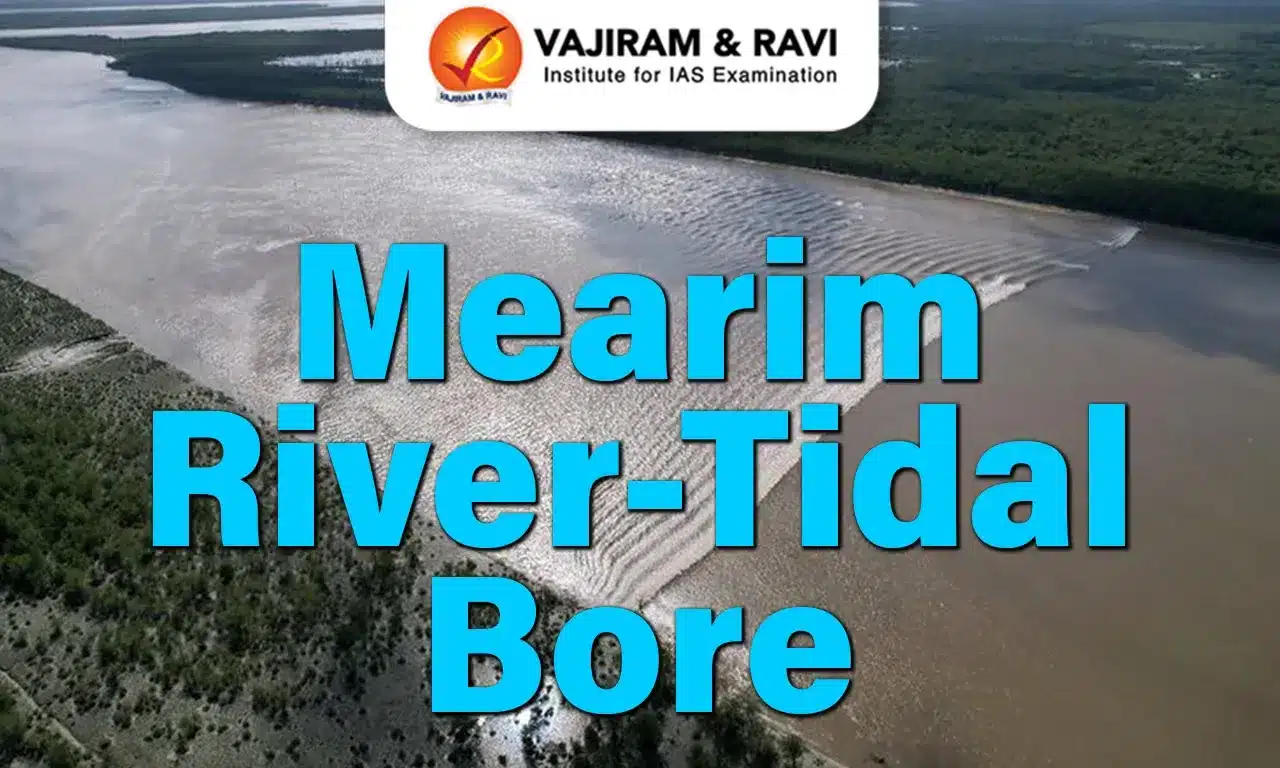Mearim River – Tidal Bore Latest News
Recently, a Brazilian surfer, known for surfing the world’s longest tidal waves, uses the Mearim’s pororoca to raise awareness about climate change and ecological degradation.
Mearim River
- The Mearim River is a major river located in Maranhão state, in northern Brazil.
- It originates in southern Maranhão and drains northward into the Baía de São Marcos (São Marcos Bay), where it forms a common estuary with the Pindaré and Grajaú rivers.
- The river is ~800 km long, flowing through the Atlantic Coastal Plain marshlands and passing through dense tropical rainforests and mangrove ecosystems.
- The river’s upper and middle courses are marked by rapids, making them non-navigable, while only the lower course is suitable for navigation.
- The Mearim River forms the southern boundary of the Tocantins–Araguaia–Maranhão moist forests ecoregion, an important biodiversity hotspot.
Tidal Bore (Pororoca) Phenomenon
- The Mearim River is famous for its pororoca, a tidal bore that occurs when high tides from the ocean travel upstream into the river.
- The term “pororoca” is derived from the Tupi Indigenous language, meaning “great roar”, referring to the thunderous sound generated by the collision of river and ocean waters.
- A tidal bore is a positive surge of water created when rising ocean tides push against river currents, typically occurring during spring tides and supermoons.
- The height of the bore is generally greater near the banks of the river than at the centre and can travel upstream for 30 minutes after the peak high tide.
- The Mearim pororoca is one of the last remaining tidal bores of significant strength in Brazil, attracting surfers and researchers.
Mearim River – Tidal Bore FAQs
Q1: Where is the Mearim River located?
Ans: The Mearim River is located in the Maranhão state of northeastern Brazil and flows into the Atlantic Ocean.
Q2: What unique tidal phenomenon is observed in the Mearim River?
Ans: The Mearim River is known for the tidal bore called the “Pororoca,” where ocean tides push upstream against the river current, creating large waves.
Q3: Which other rivers globally experience tidal bores like the Mearim?
Ans: Rivers like the Amazon (Brazil), Qiantang (China), and Seine (France) also exhibit tidal bores.
Source: REU
Last updated on November, 2025
→ Check out the latest UPSC Syllabus 2026 here.
→ Join Vajiram & Ravi’s Interview Guidance Programme for expert help to crack your final UPSC stage.
→ UPSC Mains Result 2025 is now out.
→ UPSC Notification 2026 is scheduled to be released on January 14, 2026.
→ UPSC Calendar 2026 is released on 15th May, 2025.
→ The UPSC Vacancy 2025 were released 1129, out of which 979 were for UPSC CSE and remaining 150 are for UPSC IFoS.
→ UPSC Prelims 2026 will be conducted on 24th May, 2026 & UPSC Mains 2026 will be conducted on 21st August 2026.
→ The UPSC Selection Process is of 3 stages-Prelims, Mains and Interview.
→ UPSC Result 2024 is released with latest UPSC Marksheet 2024. Check Now!
→ UPSC Prelims Result 2025 is out now for the CSE held on 25 May 2025.
→ UPSC Toppers List 2024 is released now. Shakti Dubey is UPSC AIR 1 2024 Topper.
→ UPSC Prelims Question Paper 2025 and Unofficial Prelims Answer Key 2025 are available now.
→ UPSC Mains Question Paper 2025 is out for Essay, GS 1, 2, 3 & GS 4.
→ UPSC Mains Indian Language Question Paper 2025 is now out.
→ UPSC Mains Optional Question Paper 2025 is now out.
→ Also check Best IAS Coaching in Delhi
Tags: mearim river tidal bore prelims pointers upsc prelims current affairs

















